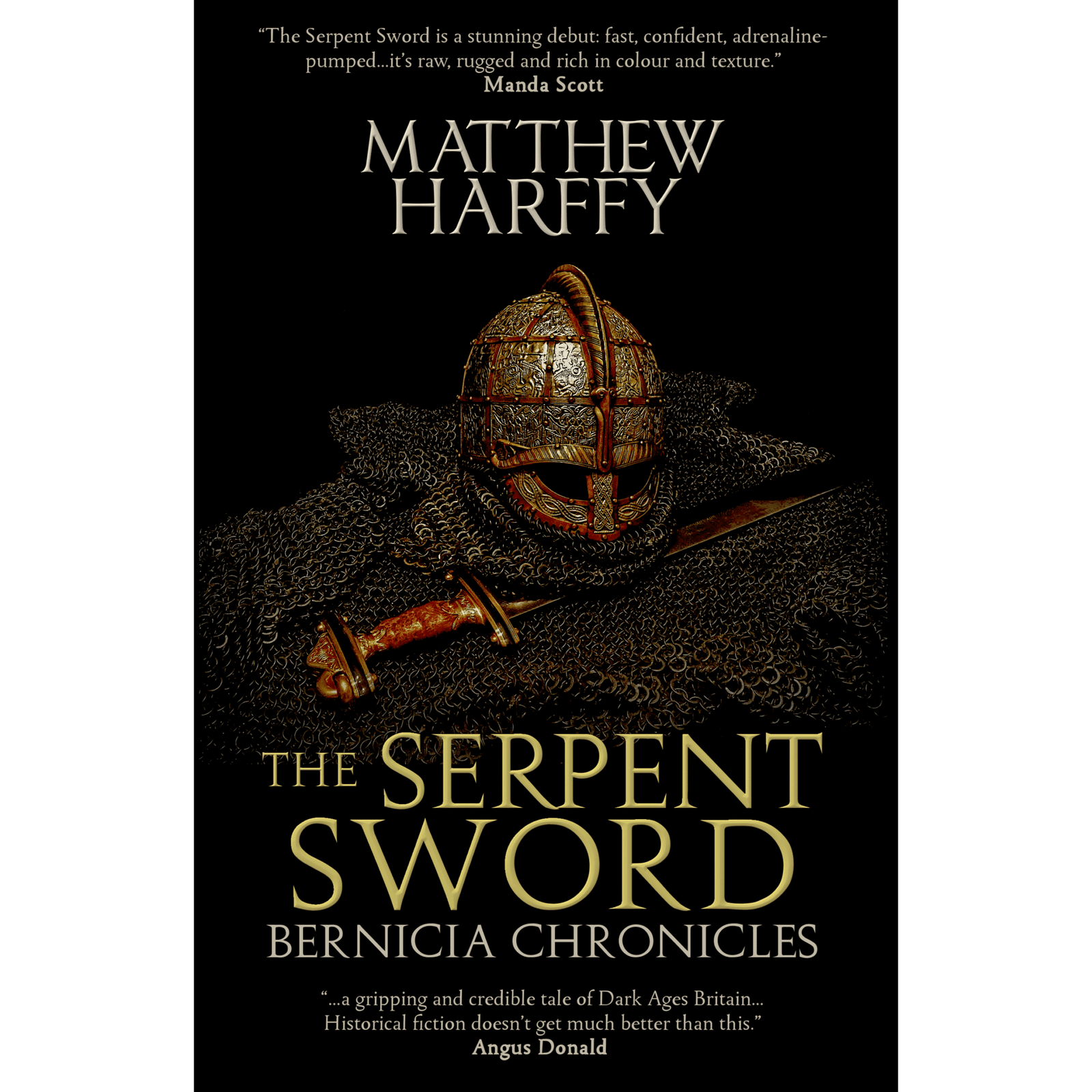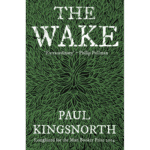
Fans of dark age Britain will find much to admire in Matthew Harffy’s debut novel, The Serpent Sword, the first in his Bernicia Chronicles series. Set in 7th-century Northumbria, a land divided by warlords, tribal rivalries, and religious flux, Harffy delivers a visceral and atmospheric tale that grips the reader with its bleak realism and immersive setting. For readers fascinated by the post-Roman, pre-Viking centuries this is a compelling and satisfying entry point into a turbulent period often overlooked in fiction.
The novel follows Beobrand, a young man from Cantware (Kent), who journeys north after the murder of his brother, seeking both vengeance and a new life in the kingdom of Bernicia. This premise may seem like familiar ground – revenge, battle, and personal transformation – but Harffy handles the genre’s staples with sincerity and a historian’s eye for detail. While The Serpent Sword features its share of action, bloodshed, and dramatic confrontations, it also excels in recreating a believable world shaped by the harshness of life and the uncertainties of shifting power.
A Bleak and Believable Britain
Harffy’s Northumbria is no romanticized version of early medieval Britain. It is cold, raw, and often brutally indifferent to human suffering. Villages are sacked, people die suddenly and cruelly, and lords rise and fall in short, violent bursts. The environment itself – windswept moors, forested hills, and treacherous coasts- feels like a character in its own right, ever-present and ominous.
The historical setting is well handled. Harffy depiction of the political structure, the warrior culture, and the complex interplay of paganism and Christianity reflects serious research and an instinct for authenticity. The result is a setting that feels real without ever turning into a dry history lesson. Those with some background in the period – perhaps familiar with Bede or the archaeological record – will appreciate the subtle nods to the real figures and events that shaped the age.
A Gritty Protagonist’s Journey
Beobrand is not a born hero – he is young, often naïve, and makes more than a few mistakes as he learns the brutal realities of life in a warrior society. His arc across the novel is one of maturation, forged through hardship, loss, and violence. This development is one of the book’s strengths. Beobrand is not a chosen one or a man of destiny; he becomes a thegn through hard choices and bloodied hands.
At times, the reader may find Beobrand frustrating – he broods, hesitates, and falls prey to rash decisions – but this only adds to the realism of his character. Harffy allows his protagonist to grow gradually, and while this makes for a slower pace in the early chapters, the emotional payoff by the novel’s end is all the more satisfying.
Spiritual and Physical Conflicts
One of the most compelling aspects of The Serpent Sword is how it captures the era’s transitional nature – especially the collision between old gods and the new Christian faith. Harffy threads this tension throughout the narrative without ever letting it dominate. Christianity is rising in Bernicia, but the old beliefs linger in the shadows, and warriors like Beobrand live with one foot in each world. This religious ambiguity mirrors the political instability of the time and gives the book a thematic weight beyond the clash of swords.
Speaking of swordplay, Harffy doesn’t disappoint. The combat scenes are vivid and raw, not romanticized. Battles are messy, brutal, and often decided as much by luck or terrain as by valor. Readers who appreciate the gritty realism of Bernard Cornwell’s Saxon Stories will feel at home here. However, unlike Cornwell’s more sweeping, multi-decade epics, Harffy keeps the scale tighter and more personal in this first outing, which allows for greater focus on character relationships and individual growth.
Tone and Style
Harffy writes in straightforward, muscular prose that suits the grim tone of the story. He doesn’t indulge in overly archaic language, yet his dialogue and descriptions feel appropriate for the setting. His world is grounded and tangible – you can feel the mud beneath your boots and hear the clang of steel on shield.
Secondary characters can occasionally feel underdeveloped, but that’s a minor quibble about a book that accomplishes what it sets out to do: immerse the reader in a forgotten corner of English history and tell a gripping, human story within it.
Conclusion
The Serpent Sword is an impressive debut that marks Matthew Harffy as a writer with a clear love and respect for the dark ages. It is a story of loss and vengeance, of identity forged in violence, and of a young man’s struggle to find his place in a world that rarely offers second chances. For those intrigued by the shadowy kingdoms of pre-Viking England – the era of Æthelfrith, Edwin, and Oswald – this novel offers a compelling and historically textured journey.
Readers interested in the formative years of English nationhood, in the fusion of Germanic and Romano-British cultures, or in the violent, uncertain rise of Christianity in a pagan land will find Harffy’s vision of Bernicia both entertaining and enlightening. With its blend of grit, history, and heart, The Serpent Sword earns its place alongside the works of Cornwell and Giles Kristian. Highly recommended for anyone drawn to the dark age north of Britain – not as legend, but as it might truly have been




